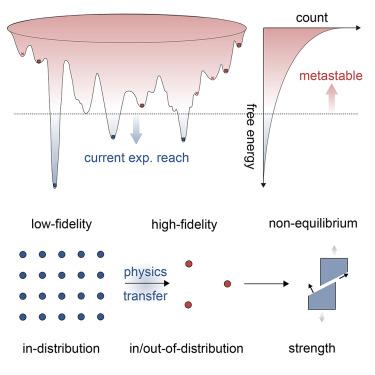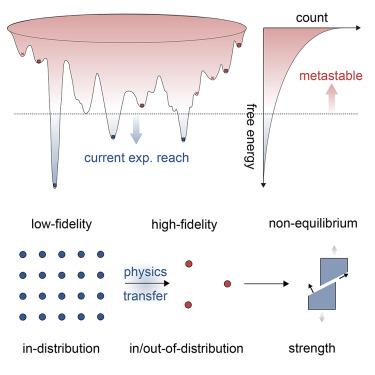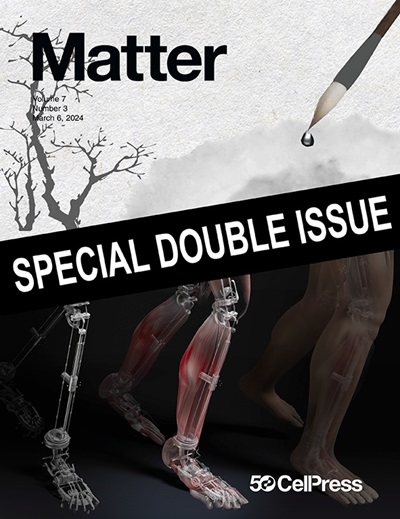Discovering high-strength alloys via physics-transfer learning
IF 17.5
1区 材料科学
Q1 MATERIALS SCIENCE, MULTIDISCIPLINARY
引用次数: 0
Abstract
Predicting the strength of materials requires knowledge over multiple scales, striking a balance between accuracy and efficiency. Peierls stress measures material strength by evaluating dislocation resistance to plastic flow, reliant on elastic lattice responses and the crystal slip energy landscape. Computational challenges due to the non-local and non-equilibrium nature of dislocations prohibit Peierls stress evaluation from state-of-the-art material databases. We propose a physics-transfer learning framework that leverages neural networks trained on force-field simulations to understand crystal plasticity physics, predicting Peierls stress from material parameters derived via first-principles calculations, which are otherwise computationally intractable for direct dislocation modeling. This physics-transfer approach successfully screens strengths of metallic alloys from a limited number of single-point calculations with chemical accuracy. Guided by the prediction, we fabricate high-strength binary alloys previously unexplored via high-throughput ion-beam deposition. The framework solves problems facing the accuracy-performance dilemma by harnessing multi-scale physics in materials sciences.


通过物理迁移学习发现高强度合金
预测材料的强度需要多种尺度的知识,在准确性和效率之间取得平衡。佩尔斯应力通过评估对塑性流动的位错阻力来测量材料强度,依赖于弹性晶格响应和晶体滑移能量景观。由于位错的非局部和非平衡性质,计算上的挑战使最先进的材料数据库无法进行Peierls应力评估。我们提出了一个物理迁移学习框架,该框架利用经过力场模拟训练的神经网络来理解晶体塑性物理,通过第一性原理计算得出的材料参数预测佩尔斯应力,否则直接位错建模在计算上是难以解决的。这种物理转移方法成功地从有限数量的单点计算中筛选出金属合金的强度,并且具有化学精度。在预测的指导下,我们通过高通量离子束沉积制备了以前未开发的高强度二元合金。该框架通过利用材料科学中的多尺度物理解决了面临精度和性能困境的问题。
本文章由计算机程序翻译,如有差异,请以英文原文为准。
求助全文
约1分钟内获得全文
求助全文
来源期刊

Matter
MATERIALS SCIENCE, MULTIDISCIPLINARY-
CiteScore
26.30
自引率
2.60%
发文量
367
期刊介绍:
Matter, a monthly journal affiliated with Cell, spans the broad field of materials science from nano to macro levels,covering fundamentals to applications. Embracing groundbreaking technologies,it includes full-length research articles,reviews, perspectives,previews, opinions, personnel stories, and general editorial content.
Matter aims to be the primary resource for researchers in academia and industry, inspiring the next generation of materials scientists.
 求助内容:
求助内容: 应助结果提醒方式:
应助结果提醒方式:


